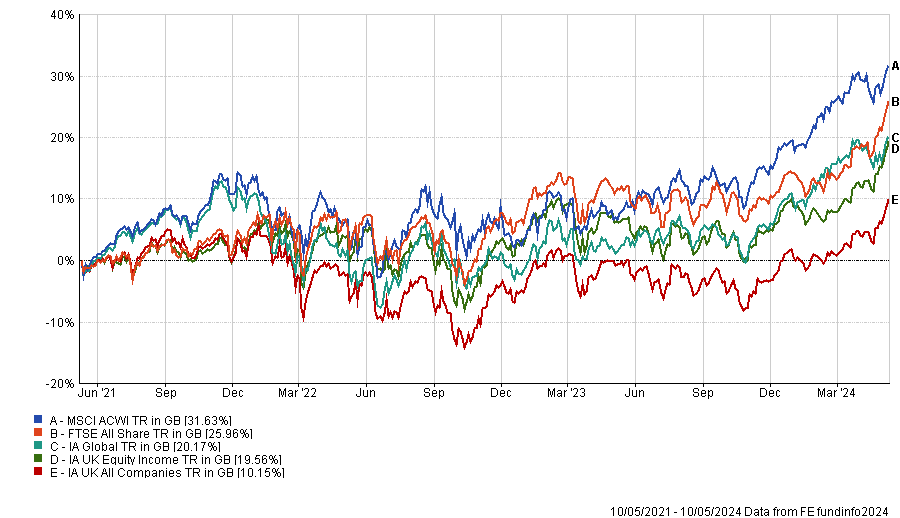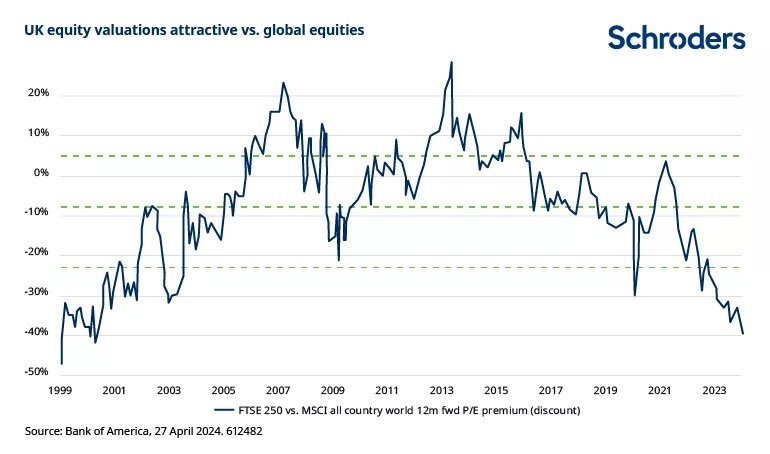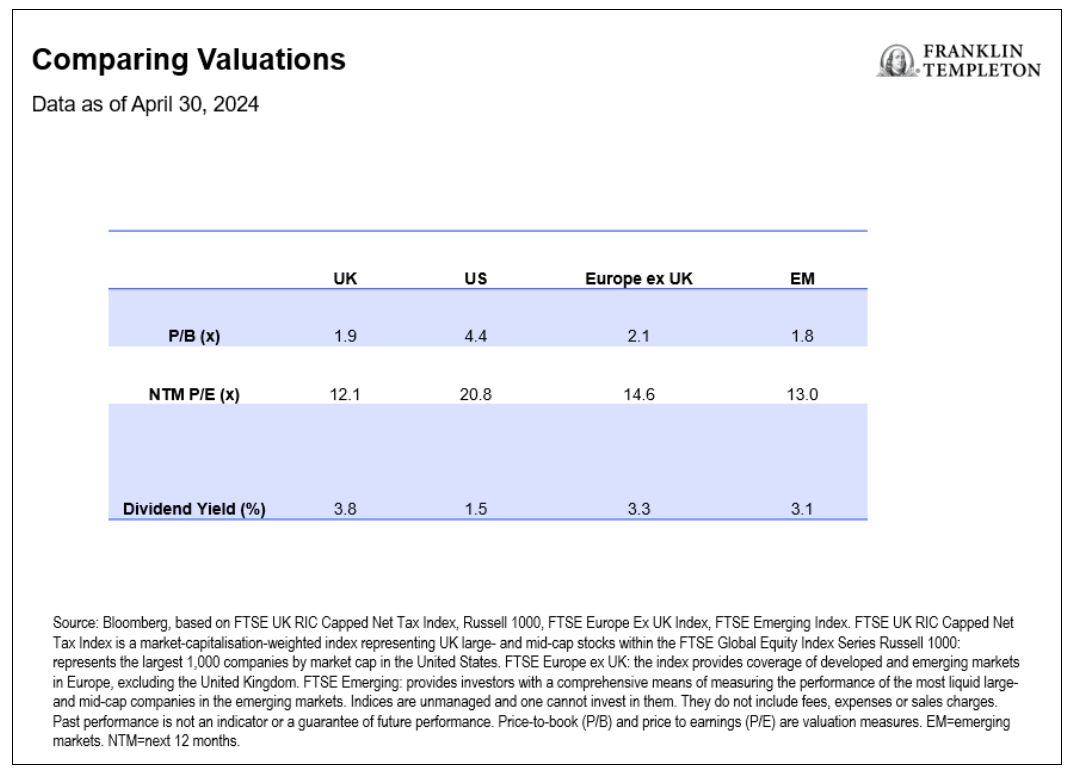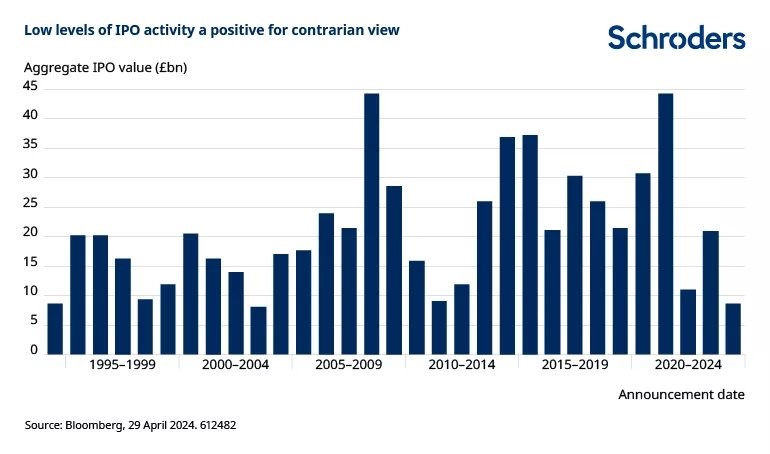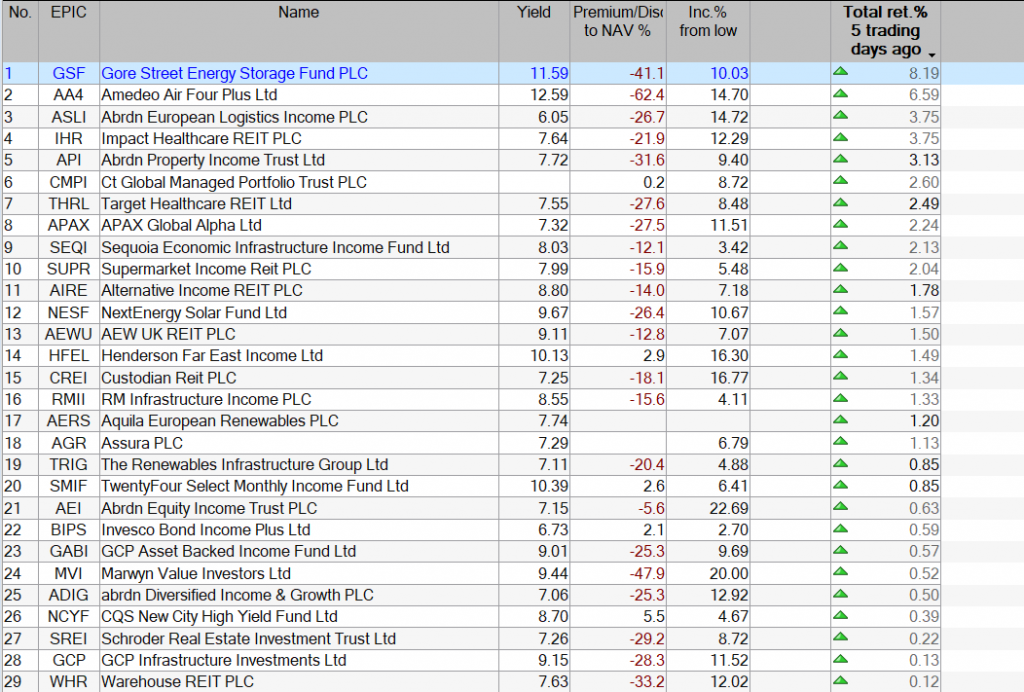The Results Round-Up – The Week’s Investment Trust Results
Which shareholders are being paid to wait for a lasting recovery in income stocks thanks to an 8.3% dividend yield? And UK small and medium-sized company valuations “remain incredibly attractive” according to one Chairman, but who said it? Find out in this week’s round-up.
By Frank Buhagiar

BlackRock Smaller Companies’ (BRSC) one inescapable truth
BRSCoutperformed its benchmark during the full year despite reporting a -3.6% decline in NAV per share for the year. That’s because the Deutsche Numis Smaller Companies plus AIM Index (excluding Investment Companies) fared worse, ending the period down -5.8%. As for share price total return, this almost finished the year in positive territory (-0.8%). Relative performance stacks up over the longer-term too. According to Chairman Ronald Gould’s full-year statement, £1,000 invested in BRSCon 28 February 2006 would have grown in value by +421.5% in NAV terms by 29 February 2024. That compares to just +150.7% had that £1,000 been instead invested in the ‘UK open-ended income sector median’.
What’s more, since year end the fund has recovered lost ground despite ‘continued and significant market volatility’ – NAV (as at 8 May 2024) is up +8.0%, once again beating the benchmark’s +7.8%. A thumbs up then for the strategy to weight the portfolio towards companies with well capitalised balance sheets and entrepreneurial management teams that are able to rapidly adapt their businesses to the shifting market dynamics. For those searching for the one inescapable truth, the investment managers have the answer – UK small and medium-sized company valuations remain incredibly attractive. Perhaps should have made it clear the one inescapable truth related to financial markets in this instance. The search for the truth goes on.
JPMorgan: “BRSC has underperformed the index TR since late 2021 but has partially reversed that underperformance in the past year. BRSC, like most of its peers, has a growth style bias which likely has been a significant factor in performance. We feel our Neutral recommendation for BRSC remains fair.”
abrdn Equity Income’s (AEI) dependable income
AEI’s NAV total return of +1.6% for the half year fell short of the FTSE All-Share Index’s +6.9%. Chair Sarika Patel puts the underperformance down to income stocks being overlooked in favour of growth companies during the latest half year. Encouragingly, towards the end of the period, a noticeable shift towards value names was observed which coincided with a recovery in our relative performance. Helpfully, investors are being paid to wait for a lasting recovery in income stocks – as at 31 March 2024, the shares were offering a dividend yield of 8.3%. And according to Patel, the yield is based around dependable income, always useful as a high proportion of the total return generated by UK equities over time has come from dividends.
In his outlook statement Portfolio Manager, Thomas Moore, managed to fit in a weather forecast, “we are now increasingly confident that the clouds that have existed for some time are now dissipating, with many of our holdings now delivering on the investment thesis we originally anticipated at the time of purchase.” Here’s to blues skies and sunnier days ahead.
Winterflood: “Largest sector exposures at period-end were Financials (36% of portfolio value), Energy (16%) and Industrials (11%). Net gearing at period-end was 12.5% (30 September 2023: 11.3%). Manager has re-focused portfolio positioning towards stocks where he sees potential for combination of dividend yield, dividend growth and valuation re-rating.”
Polar Capital Global Healthcare (PCGH) expecting more of the same
PCGH posted a double-digit NAV per share return for the latest half-year period. The +16.55% return for the six months under review easily beat the +9.56% clocked by the MSCI ACWI/Healthcare Index (total return in sterling with dividends reinvested). That means NAV per share is now up +95.3% since the fund was restructured in June 2017, once again comfortably ahead of the benchmark’s +81.88%. In their half-year review, the investment managers cite strong stock selection as the reason for the latest bout of outperformance.
And the investment managers are expecting more of the same. They believe the sector’s key growth drivers including innovation, emerging markets and artificial intelligence along with rising demand will continue to drive revenue and earnings growth, along with outperformance, in the years ahead.
Winterflood: “Discount narrowed slightly from 7.7% to 6.7%. Outperformance driven by stock selection. Over the period, exposure to healthcare facilities was reduced to take profits, while biotechnology exposure was increased.”
Baillie Gifford European Growth (BGEU) waiting for the love to return to Europe
BGEUput in a strong showing over the half year – NAV total return came in at +20.2% compared to a still impressive +14.9% from the FTSE Europe ex UK Index (sterling). The share price beat the index too, rising +18.5%. The Interim Management Report admits that, as with other growth investors, rapidly rising inflation and interest rates have been painful. But the managers have been proactive, getting rid of weak companies and capitalising on low valuations to pick up competitively advantaged ones. They’ve also taken the opportunity to add to long-term winners that are currently facing challenges, albeit temporary ones.
The investment managers think there’s more to come too. In their view Europe is unloved and because of that there is the chance to pick up resilient companies offering significant long-term upside on sale. According to the investment managers ,“it feels like a better time to be a long-term European growth investor than it has for several years.” Just need Europe to start feeling the love now.
Numis: “The fund provides exposure to fast-growing European companies, and also benefits from opportunities to invest in unquoted assets through the Baillie Gifford network, with a maximum allocation of 20% (currently c.10%). Style headwinds have dampened medium-term performance, and since Baillie Gifford took over management the fund has produced NAV total returns of 32.8% (6.5% pa), compared with 43.3% (8.2% pa) for the index.”



